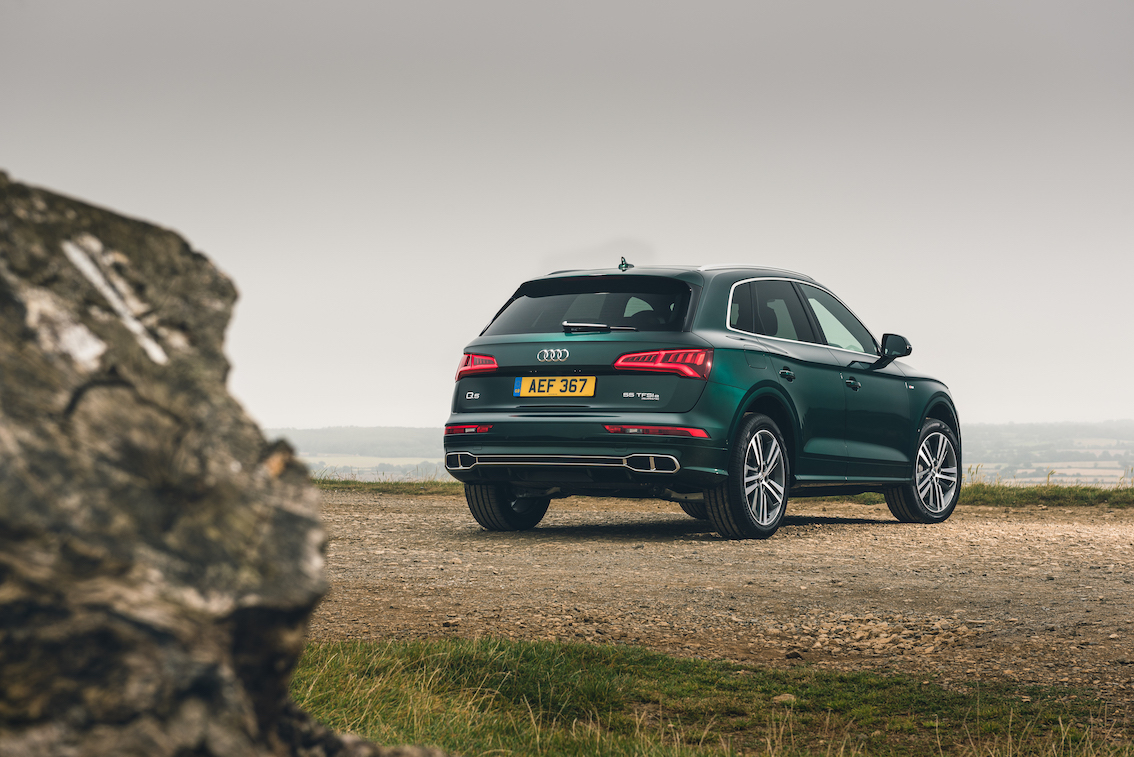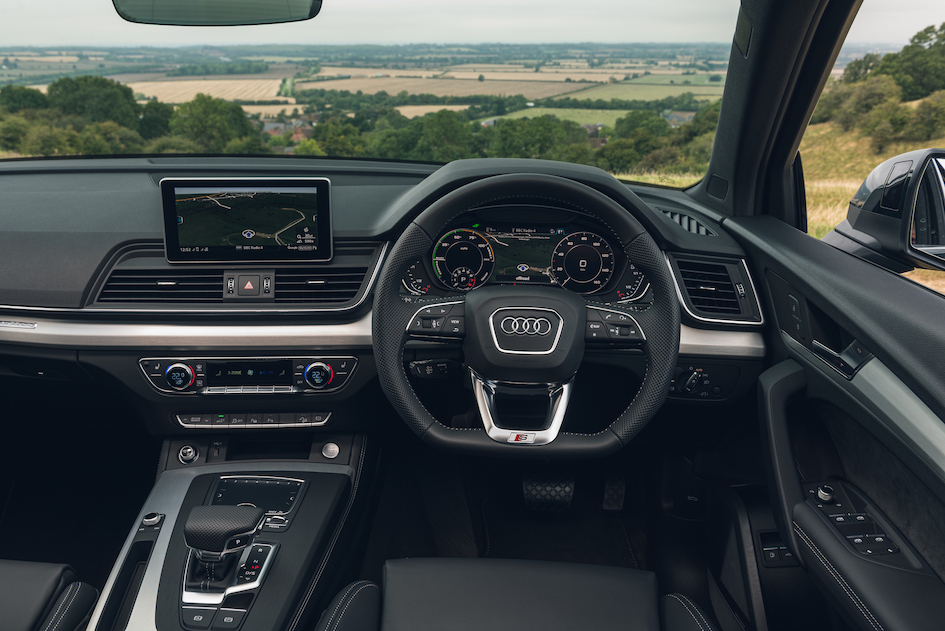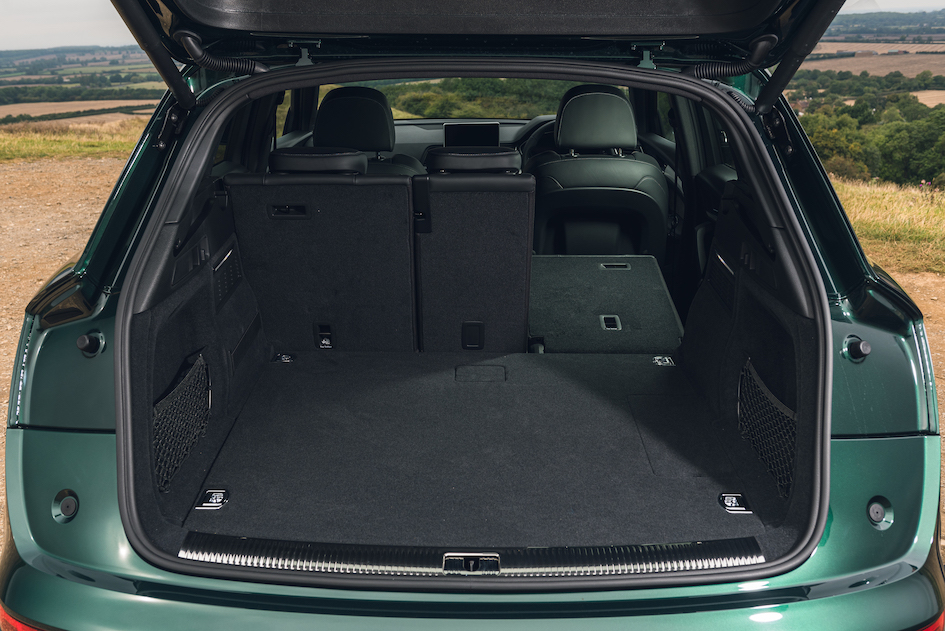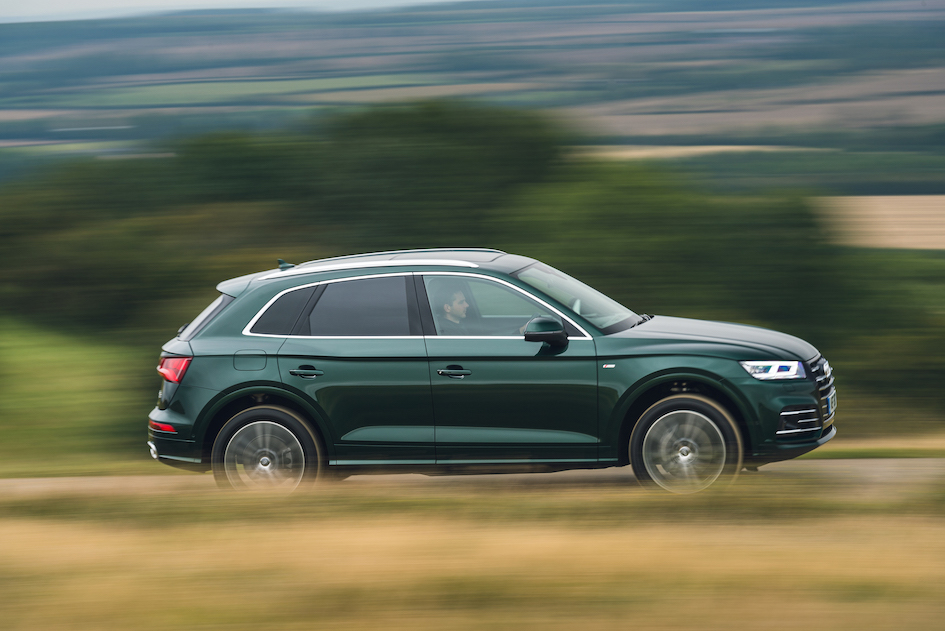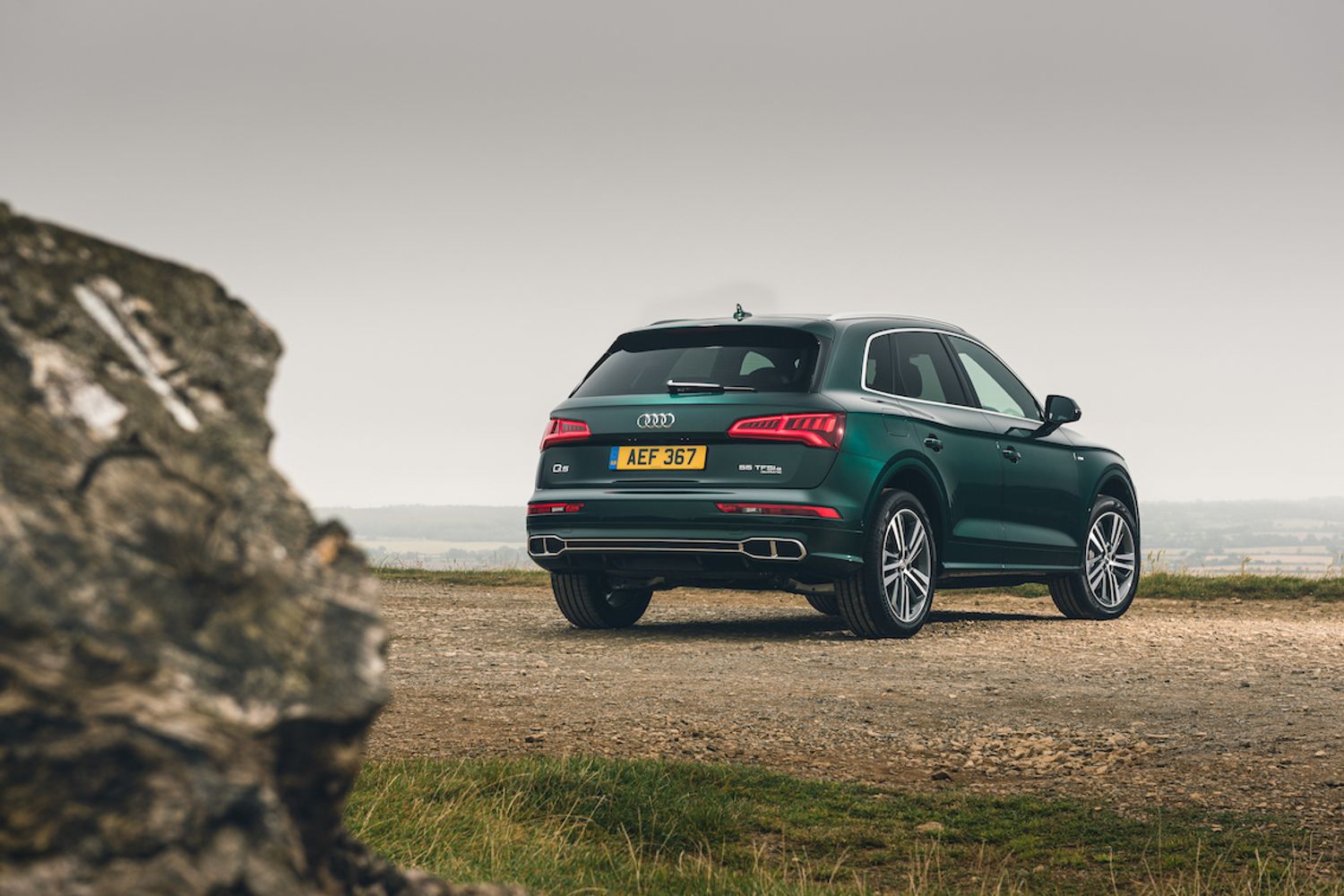More manageable and city-friendly than the titanic seven-seat Q7, but still ready for virtually anything a family can throw at it, the Q5 has been one of Audi’s most successful and coveted models since its launch in 2008. In fact, for well over half a decade it was actually notable as the world’s best-selling premium mid-size SUV, so it clearly has broad and enduring appeal.
Audi didn’t drag its heels when it came to electrifying its second-born SUV. A petrol-electric Q5 hybrid quattro launched way back in 2012, but it wasn’t sold in the UK because its emissions and economy didn’t really move the needle versus equivalent TDI models, making it unlikely to score a hit here, particularly with company car drivers grappling with CO2-based taxation.
It would be another seven years before Audi pitched its first plug-in Q5 into a by now significantly more environmentally focused UK market that was increasingly turning its attention to electrification. The Q5 55 TFSI e quattro made its debut here in mid-2019 in the second-generation model, combining a four-cylinder petrol engine with an electric motor and powerful battery to deliver a punchy 362 bhp output and quoted electric-only range of 26 miles.
This hefty performance, and the model’s similarly lofty Competition specification, landed it with an appropriately big-ticket price tag, but fortunately buyers who didn’t need quite so much muscle on the school run would soon also be catered for by a slightly more modest 294 bhp version. Available in a wider range of trim levels, it brought zero-emission Q5 driving within reach of a wider audience, albeit one which still needed deep pockets!
For anyone seeking out a used Q5 hybrid among the growing number now available in the classifieds, a mid-life facelift and the addition of a range of even sleeker-looking Q5 Sportback models haven’t helped to simplify the decision-making process, so here’s what we reckon you need to consider before taking the plunge.
Prices
As it’s a relatively recent addition to the Q5 range, the TFSIe plug-in isn’t in abundance in the classifieds just yet, and the Sportback version with its more coupé-like roofline doesn’t appear at all at the time of writing because it’s an even more recent arrival. The majority of the stock is being offered by Audi dealers, and its sedately diminishing prices reflect the Q5’s generally strong residual value, the relative youth of these variants and the fact that many examples have covered less than 10,000 miles. They currently start from upwards of £38,000 for a pre-facelift car, and head rapidly northwards towards £60,000.
The less powerful of the two models available – the Q5 50 TFSI e quattro – offers a choice of Sport, S line, Edition 1 and Vorsprung trim levels. All are satisfyingly comprehensive, but the Vorsprung option deserves a special mention. It ratchets up visual desirability with the most imposing alloys and black styling detailing, and luxury courtesy of features like adaptive air suspension, Bang & Olufsen audio and a full-length panoramic glass sunroof. It also adds a host of driver assistance systems that make much lighter work of everyday driving. Not surprisingly, that opulence commands a hefty premium though, so unless a particularly attractively priced used example comes to light, we reckon most buyers would be happiest with S line specification, which caters for most needs more than sufficiently.
Keener drivers interested in the quicker-witted 55 TFSIe quattro versions have a more limited specification choice – it’s only available in conjunction with upscale Competition and Competition Vorsprung trim lines, so the chances of bagging one at a particularly competitive price are slimmer.
In 2020 the Q5 range underwent a pretty comprehensive facelift designed to bring it more closely into line with newer additions to Audi’s Q family in terms of both styling and technology. Out went the old infotainment system with its chunky rotary control knob for accessing most functions, and in came a new MMI Touch unit with a larger 10.1-inch touch-responsive screen and updated functions. The fully digital Audi Virtual Cockpit was also added as standard equipment for all models.
Given the choice, we would opt for the 50 TFSIe quattro S line, and we wouldn’t be unduly bothered about bagging the most recent version. The pre-facelift car still arguably looks sufficiently fresh and modern, and its cabin still has a high feelgood factor. It’s entirely possible that a good deal of users will also prefer its original turn-and-click rotary control-based infotainment system to the potentially more fiddly and distracting touch-screen update, although that’s obviously a matter of taste.
Spotting an Audi Q5 TFSI e
Aside from the subtle ‘e’ suffix in the badge and the fact that each side of the body is punctuated with a filler flap, there’s very little to mark out the TFSI e models from their regular counterparts visually. LED headlights and tail lights are standard, and as part of the facelift all trims bar the entry level Sport adopted Matrix LED front lights which can cleverly divert their high beams around leading and oncoming traffic to maximise visibility.
It’s the same story inside, where apart from additional displays for the driver showing the hybrid drive mode and range it’s pretty much business as usual. That means pleasant soft-feel plastics, high quality fabrics and an airy, comfortable and robust feel that makes whiling away motorway hours uncommonly pleasant. The Q5’s stand-out acoustic refinement helps here too, and it’s obviously even more evident in the TFSI e variants with their near-silent electric motors.
Top tech
In both TFSI e models Audi’s sprightly turbocharged 2.0 TFSI four-cylinder petrol engine appears in 248 bhp form alongside a punchy 140 bhp electric motor and lithium-ion battery. Combined, they give the 50 TFSI e quattro only a fraction less outright power than Audi’s 296 bhp SQ2 high performance SUV, and the 55 TFSI e Competition quattro a considerably larger helping than the mighty 336 bhp SQ5 TDI. Where the engine and motor are concerned, the 50 TFSI e and 55 TFSI e models are essentially the same – it’s mainly software tweaks that deliver their differing total system outputs.
Drivers of the 50 TFSI e quattro model in its various forms can expect a 0-62mph time in the region of six seconds and a top speed of around 149mph. If they’re behind the wheel of the 55 TFSI e quattro versions the acceleration time drops to around 5.3 seconds on the way to the same top speed.
In both set-ups power is transmitted through a seven-speed S tronic twin-clutch gearbox that makes quick and pleasantly sporty shifts. Like all Q5 drivers, TFSI e owners can also feel a little safer in the knowledge that they can count on quattro all-wheel-drive to keep things on an even keel on winding roads and in slippery conditions.
Fittingly, the TFSI e models feature the latest, most efficient version of the system the company refers to as ‘quattro with ultra technology’. To save fuel, it disengages the rear wheels when they’re not needed during everyday driving, but can bring them back into play in hundredths of a second when the car’s array of sensors predict traction could be compromised.
Fuel economy
When it first launched in 2019 Audi quoted an official WLTP-sourced economy figure of 113 mpg for the Q5 55 TFSI e, which despite the more realistic nature of the WLTP test is of course still very definitely best-case-scenario data. At that point, the TFSI e driver could expect to cover up to 26 emission-free miles with only the electric motor running – enough, in theory, to take care of the average Brit’s commute.
Earlier this year Audi upgraded the 50 TFSI e quattro and 55 TFSI e quattro models with a larger capacity battery which has obviously had a bearing on both economy and range potential – their economy figures now stand at 166 mpg and 188mpg respectively, and both are capable of an electric-only range of up to 37 miles. Naturally, it’ll take a while for these uprated models to make their presence felt in the used market.
Not surprisingly, both versions have a healthy dislike of fossil fuel. To avoid using it, they can coast or ‘freewheel’ with the engine switched off, and can use the electric motor to take care of the lion’s share of their braking, feeding the energy this generates back into the lithium-ion battery so that it can substitute for the petrol engine as frequently as possible. When and where they do this is cleverly calculated by the Predictive Efficiency Assistant, which is fed with data about the topography of the upcoming route and its corners, speed limits, roundabouts and other factors by the navigation system.
What goes wrong?
Thankfully we know of no cause for major alarm bells relating specifically to the TFSI e versions of the Q5. In the main, Q5 models have been known to suffer from S tronic automatic gearbox failures which can be costly to rectify and are often the result of a failure to follow the gearbox servicing schedule. The double-clutch box needs an oil change every 38,000 miles, so this isn’t a problem that should blight the current crop of relatively low mileage used Q5 TFSI e models for a while yet.
The 2.0-litre petrol engine on pre-facelift cars was also known to consume a lot of oil, although we understand that this problem had been addressed by the time the plug-in-hybrids adopted a version of it. Aside from some reports of creaky suspension ball joints and electrical glitches, particularly relating to the climate control system, electrically operated tailgate and tyre pressure monitoring system, there’s not much that counts against this model.
From new, the battery comes with an eight-year, 100,000-mile warranty, and can be called into play if battery performance tails off by more than 30 per cent in that time, so this will naturally be worth bearing in mind once age and mileage start to properly take their toll on these relatively new entrants to the used market.
Charging
Audi originally quoted a charge time of around six hours for the Q5 TFSI e models using a regular domestic socket, or 2.5 hours if you have a wall box or use a public DC charger. Using the myAudi smartphone app, drivers can check the battery’s charge status and find out how much range they have in the bank from their sofas, and also remotely start and monitor the charging process. Two charging cables are included – one with an inverter box that’s compatible with a regular domestic three-pin supply, and another for connection to public chargers that don’t have a tethered lead – so it’s worth making sure these are present and correct!
Although the name rather confusingly suggests otherwise, Q5 TFSI e buyers have the opportunity to subscribe to Audi’s e-tron charging service, which offers a choice of two cost-effective fixed price charging tariffs. Subscribers get one RFID payment card that’s valid at charge points operated by 18 suppliers across the UK and Europe, and every transaction they complete using the card appears on just one invoice to keep things nice and simple.
Summary
The Q5 was already a class act in all its forms, with outstanding driving refinement and exemplary quality and finish being its trump cards. The TFSI e models really play to those strengths, lending an air of even more limousine-like polish on the regular occasions when they’re cruising exclusively under the power of their hushed electric motors.
We reckon most prospective buyers will feel far from shortchanged if they choose the less powerful 50 TFSI e quattro version, either in original or facelifted form, and combine this with the S line specification, which takes a decent step up from the entry level Sport without straying into potentially bank-breaking pricing territory.
Dependable, smartly styled, beautifully built and meticulously engineered, the soothing Q5 TFSI e has all the makings of a used car gem.











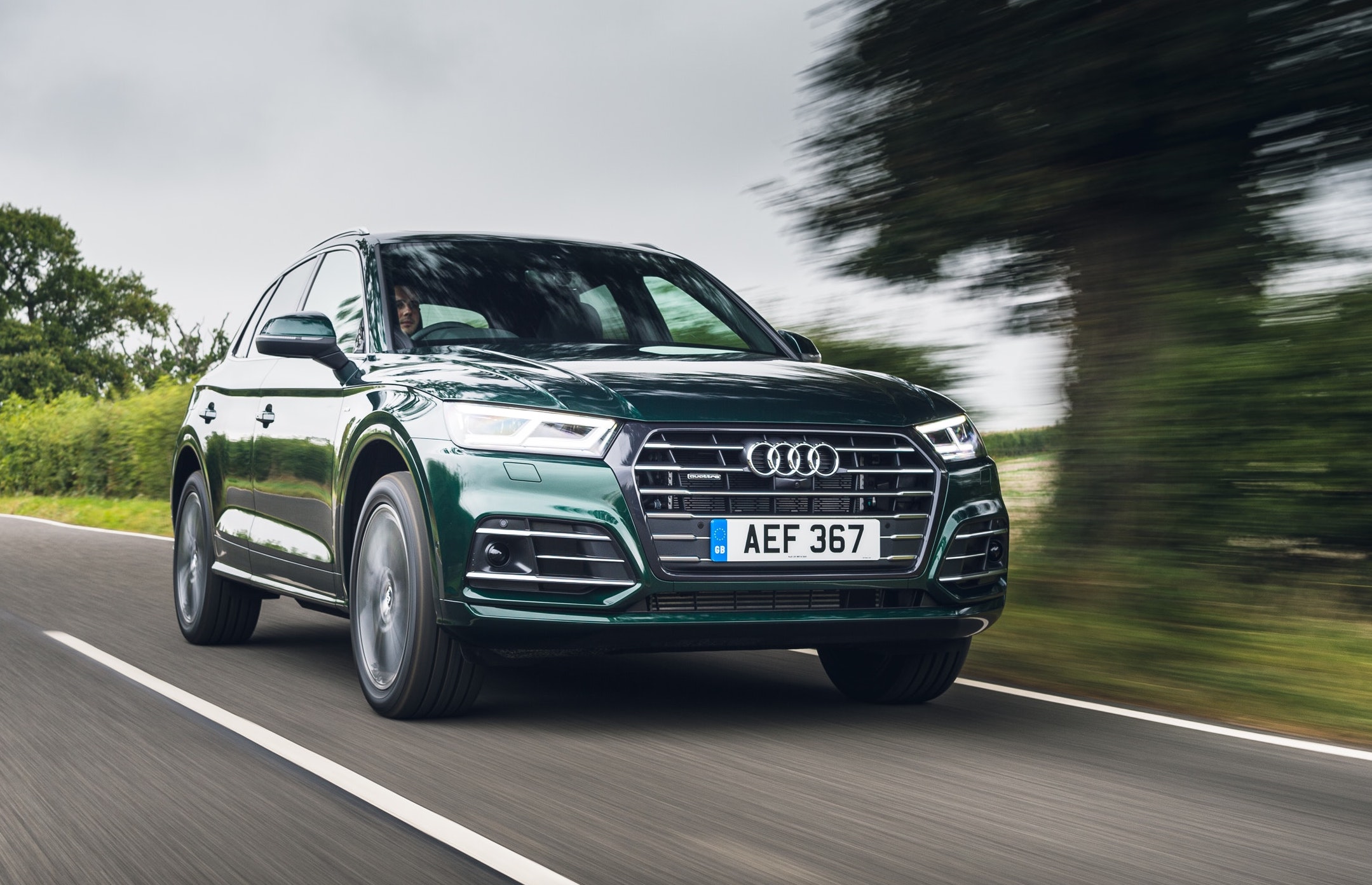.jpg)
